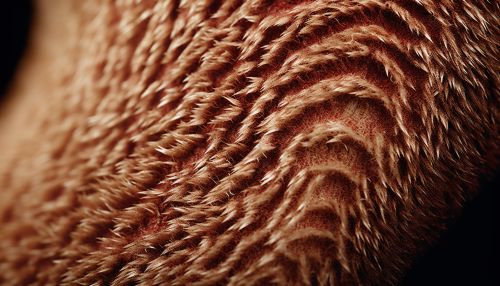Auditory Perception
Introduction
Auditory perception is the ability to interpret and make sense of sounds by the brain. It is a complex process that involves the ears' ability to receive sound waves in the environment and convert them into electrical signals, which are then processed by the brain to create a perception of the sound.
Anatomy of the Ear
The human ear is divided into three main parts: the outer ear, the middle ear, and the inner ear. Each part plays a critical role in the process of auditory perception.


Outer Ear
The outer ear consists of the pinna (or auricle) and the ear canal. The pinna is the visible part of the ear that protrudes from our heads. Its primary function is to collect sound waves and funnel them into the ear canal. The ear canal amplifies these sounds and directs them to the eardrum.
Middle Ear
The middle ear contains three tiny bones known as the ossicles: the malleus (hammer), incus (anvil), and stapes (stirrup). These bones amplify the sound waves and transmit them to the inner ear.
Inner Ear
The inner ear is where the actual hearing takes place. It contains the cochlea, a spiral-shaped organ filled with fluid and lined with thousands of tiny hair cells. These hair cells move in response to the vibrations from the sound waves, triggering an electrical signal that is sent to the brain via the auditory nerve.
Auditory Processing
The process of auditory perception begins when sound waves enter the ear and are transformed into electrical signals by the hair cells in the cochlea. These signals are then sent to the brain via the auditory nerve.
In the brain, these signals are processed by the auditory cortex, a part of the brain that is specialized for interpreting sounds. This interpretation involves several steps, including the identification of the sound's pitch, volume, and location, as well as the recognition of the sound's source or meaning.
Disorders of Auditory Perception
There are several disorders that can affect auditory perception, including hearing loss, tinnitus, and auditory processing disorder.
Hearing Loss
Hearing loss is a common condition that results in a reduced ability to hear sounds. It can be caused by many factors, including age, noise exposure, and certain medical conditions.
Tinnitus
Tinnitus is a condition characterized by the perception of noise or ringing in the ears when no external sound is present. It can be caused by a variety of conditions, including hearing loss, ear injury, and circulatory system disorders.
Auditory Processing Disorder
Auditory processing disorder (APD) is a condition that affects the brain's ability to process auditory information. Individuals with APD have normal hearing, but they have difficulty understanding speech or distinguishing between similar sounds.
Conclusion
Auditory perception is a complex process that involves the conversion of sound waves into electrical signals by the ear, and the interpretation of these signals by the brain. Understanding this process is crucial for diagnosing and treating disorders of auditory perception, and for developing technologies that can enhance our ability to perceive and interpret sounds.
